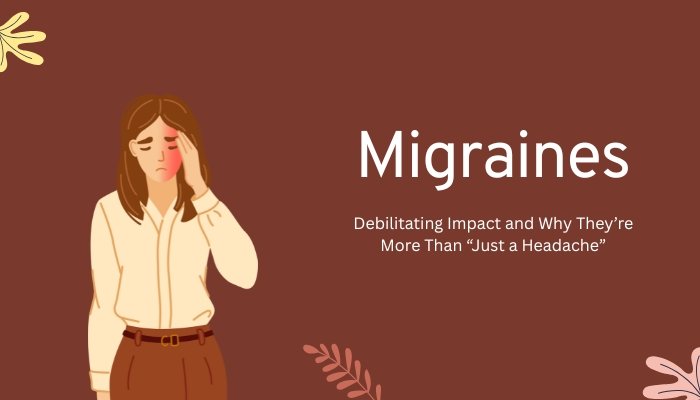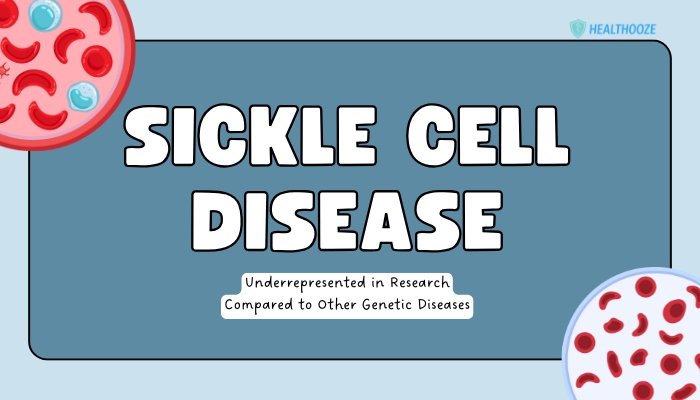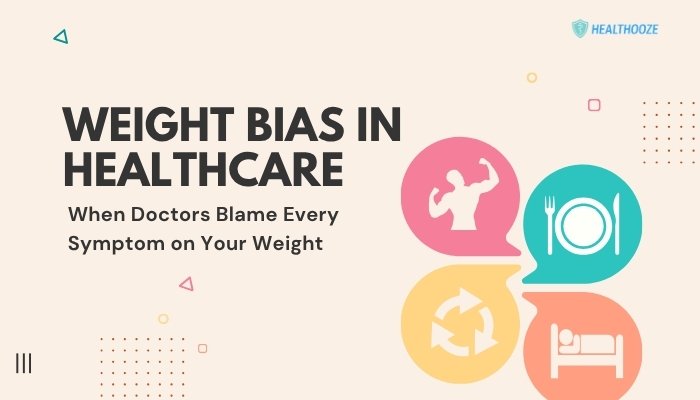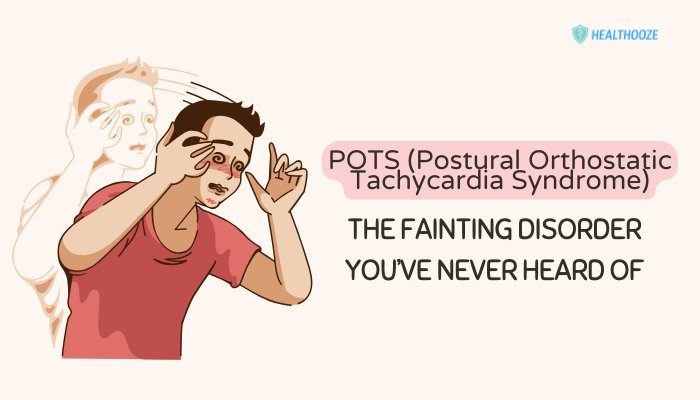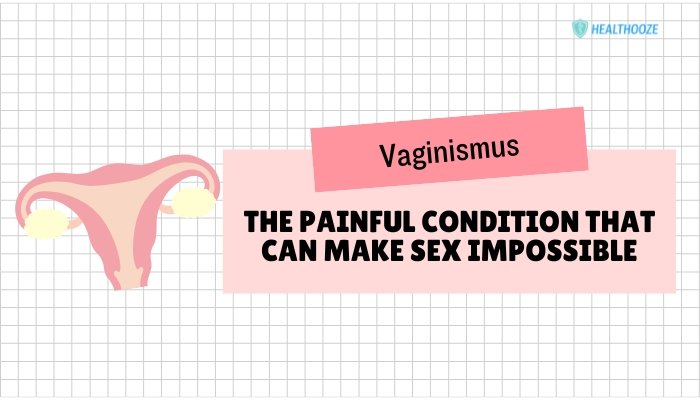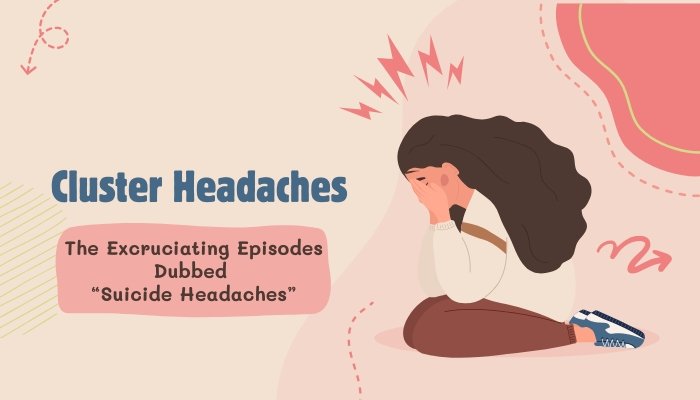Introduction
When people say they “have a migraine,” others may picture a bad headache. But migraines stand apart—complex neurological events that involve more than just pain. They can include nausea, sensory sensitivities, and cognitive fog, making simple tasks almost impossible.
Because migraines are often misunderstood, many sufferers feel pressured to push through episodes or face accusations of exaggeration. In reality, migraines can upend routines, derail workdays, and spark emotional stress. This article explores how migraines develop, the wide range of symptoms, and the strategies to minimize their life-altering impact.
What Exactly Are Migraines?
A Neurological Condition
Migraines arise from abnormal brain activity affecting nerve pathways and blood vessels, provoking episodes of moderate to severe throbbing pain—often on one side of the head. Beyond the headache, migraines can induce profound fatigue, fuzzy vision, or crippling light and sound sensitivity. The disorder may stem from genetic predispositions, environmental triggers, or a combination of both.
Phases of a Migraine Attack
- Prodrome: Hours or days beforehand, subtle changes occur—mood swings, cravings, or heightened yawning.
- Aura (Optional): About 20–25% of migraineurs experience aura—visual disturbances such as flashes of light or zigzag patterns, sometimes accompanied by numbness or speech difficulties.
- Headache: Intense pulsing or throbbing lasting 4–72 hours if untreated, often joined by nausea, vomiting, or extreme sensitivity to stimuli.
- Postdrome: After the headache subsides, a “migraine hangover” can leave you drained, disoriented, or mildly achy.
Why Migraines Are More Than “Just a Headache”
Multi-System Effects
While pain is central, migraines also involve:
- Nausea and Vomiting: Disrupts eating and hydration.
- Sensory Overload: Light, sound, or even mild odors can feel unbearable.
- Cognitive Impairment: Difficulty focusing, remembering tasks, or maintaining conversation.
Impacts on Daily Life
- Work and School: Frequent absences or suboptimal performance due to persistent pain and difficulty concentrating.
- Social and Family Dynamics: Missed gatherings or frustration from repeated cancellations can alienate friends or loved ones.
- Mental Health: Chronic migraines can foster anxiety—particularly about when the next attack will strike—and lead to depression over reduced quality of life.
Stigma and Misconceptions
Some people equate migraines with an excuse to skip responsibilities. Consequently, those afflicted might minimize their complaints, powering through pain to avoid seeming weak. Such dismissive attitudes often perpetuate feelings of isolation.
Common Triggers and Risk Factors
Identifying Personal Triggers
Migraines can be instigated by:
- Hormonal Changes: Menstruation or fluctuating estrogen levels in women frequently exacerbate migraines.
- Diet: Caffeine withdrawal, chocolate, aged cheeses, or nitrates can spark episodes.
- Environmental Factors: Bright lights, harsh odors, weather shifts, or altitude changes.
- Lifestyle Elements: Sleep irregularities, high stress, or intense physical exertion.
Genetic Influence
Migraines often run in families, suggesting certain genes predispose the brain to hypersensitive reactions. Still, not everyone inheriting these genes experiences migraines, indicating environment or triggers shape expression.
Diagnosis and Treatment Approaches
Pinpointing Migraines
A careful history is vital: if your headaches are recurrent, throbbing, moderate to severe, and accompanied by features like nausea or sensory aversion, migraines are likely. Doctors may request imaging (e.g., MRI) to exclude other causes if headaches exhibit red flags (e.g., sudden onset or neurological deficits).
Acute Pain Relief
- Triptans: Specifically target migraine pathways. Most effective if taken early in the attack.
- NSAIDs: Over-the-counter anti-inflammatories can help mild to moderate migraines, though stomach side effects can arise with frequent use.
- Antiemetics: Medications like metoclopramide ease nausea, improving tolerance of pain relievers.
Preventive Therapies
Prophylactic measures are recommended if migraines are frequent or disabling:
- Beta-Blockers: E.g., propranolol for controlling migraine frequency.
- Anticonvulsants: Topiramate or valproate.
- CGRP Monoclonal Antibodies: A newer class of migraine-specific preventive injections.
- Lifestyle: Sleep hygiene, regular exercise, stress management (e.g., mindfulness or yoga) lower the frequency of episodes.
Coping and Long-Term Management
Building a Personal Action Plan
- Migraine Diary: Log attacks, triggers, aura signs, or any unusual patterns. Helps tailor therapy.
- Avoiding Known Triggers: E.g., wearing sunglasses under bright lights, limiting certain foods, or scheduling consistent sleep.
- Routine Medical Checkups: Adjust preventive drugs as needed, monitor side effects, and keep exploring new therapies.
Emotional and Social Support
Migraines can erode self-esteem, hamper job security, and strain relationships. Mental health counseling, group therapy, or dedicated migraine forums provide solidarity and shared strategies.
Workplace and Academic Accommodations
- Flexible Schedules: Letting migraines pass or taking short breaks when aura signals approach.
- Quiet, Dimly Lit Spaces: Access to a calm corner or private area for relief can reduce the severity of an attack.
- Communication: Informing supervisors or teachers fosters empathy and helps them realize that migraines demand real adjustments, not “sick day abuses.”
Conclusion
Migraines represent a serious health condition that transcends “just a headache,” straining physical and psychological well-being. With a comprehensive approach—spanning acute interventions, preventive regimens, and an awareness of personal triggers—those who experience migraines can curb the frequency and intensity of attacks. Meanwhile, society’s evolving understanding and acceptance of migraines as a legitimate neurological disorder helps reduce stigma and fosters compassion. By blending medical solutions, self-advocacy, and supportive environments, migraineurs can find a path toward better quality of life and fewer limitations imposed by this condition.
References
- Lipton RB, Bigal ME. Migraine: epidemiology, impact, and risk factors for progression. Headache. 2005.
- GBD 2019 Diseases and Injuries Collaborators. Migraine burden globally. Lancet. 2020.
- Silberstein SD. Approach to prevention of migraine. Contin Lifelong Learn Neurol. 2015.

